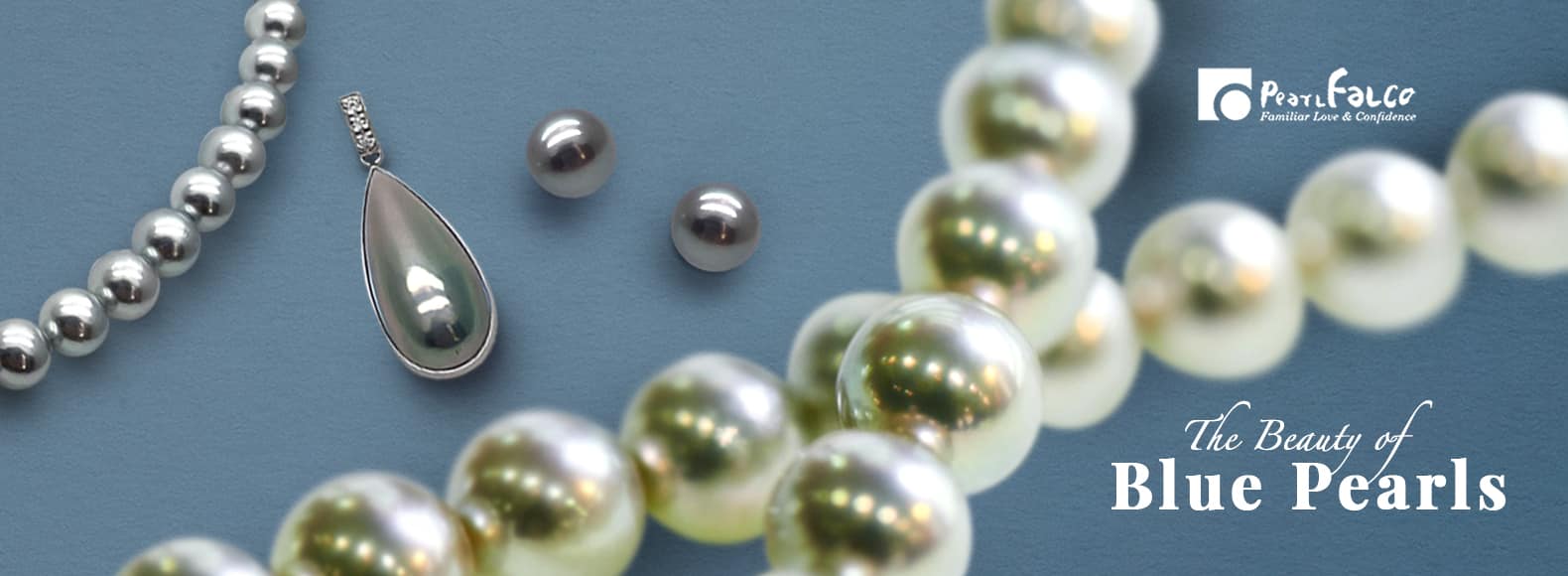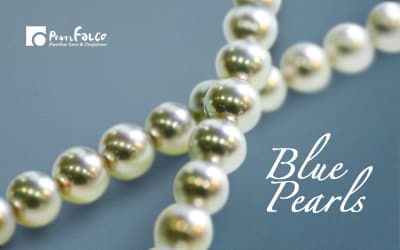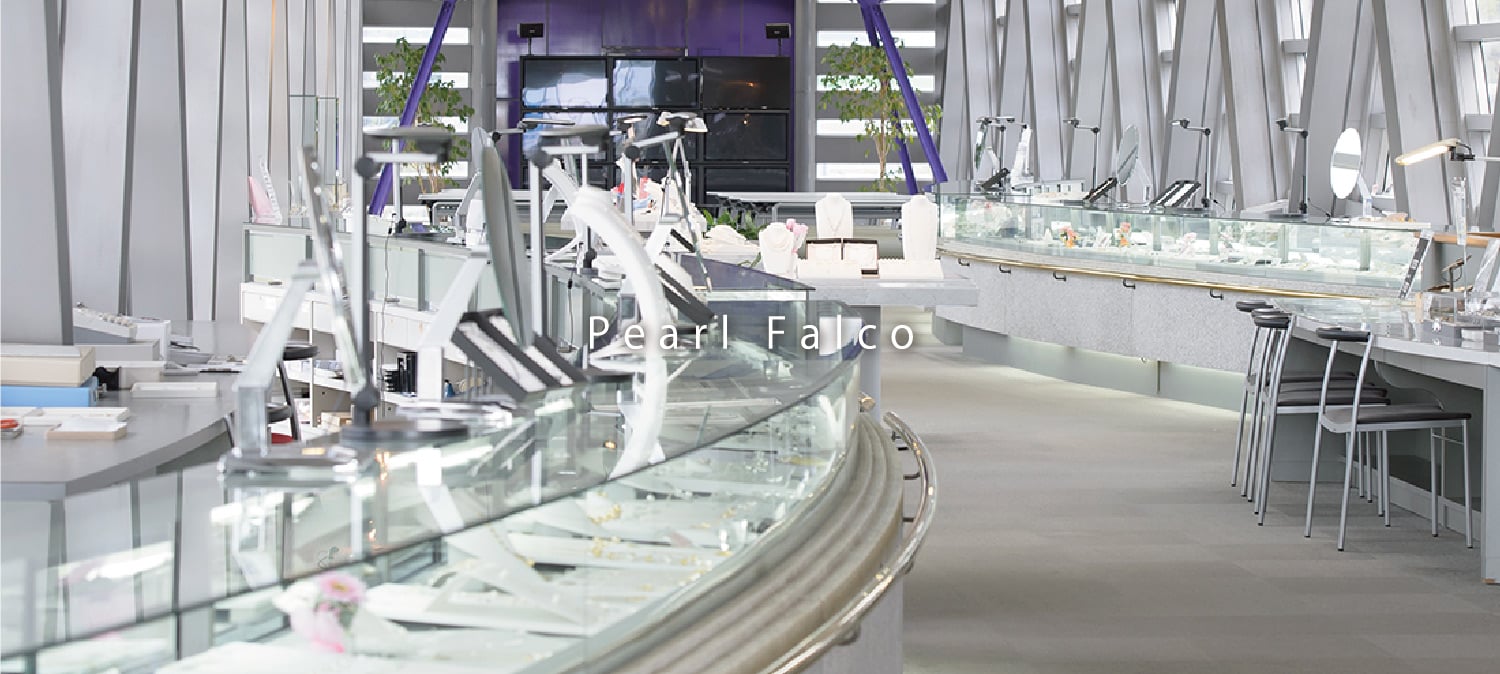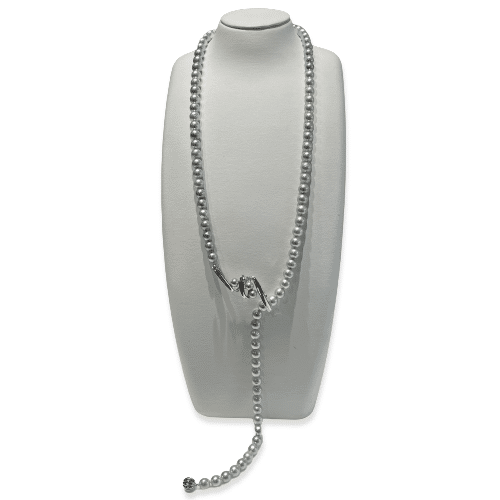
Blue Pearls. The Rarest of All Pearls
Most people appreciate how pearls come in a variety of sizes and colors. Yet few are aware of blue pearls, one of the most unique wonders of the world, arguably, the rarest of all pearl colors. Even more compelling, blue pearls come in a wide variety of blue hues, from pastel sky blue to deep midnight blue.
Sustainable Pearl Cultivation Began in Ise Shima Japan
A method to sustainably and consistently create beautiful round pearls was originally developed in the late 19 Century in Ise Shima Japan.
To cultivate an Akoya pearl, a mother-of-pearl “bead nucleus” and a small piece of mantle tissue is placed in the Mother Oyster. The bead serves as the nucleus of the pearl, creating an irritant which the mother oyster covers with thousands of calcium carbonate layers, commonly known as nacre, applying mantle tissue from the Mother Oyster’s shell.
Determined by the color of the mother oyster, she will begin to cover the nucleus with so many fine layers of nacre, creating a lustrous pearl in 1 to 2 years’ time. That’s why pearls sparkle, the luster comes from the inner shell of mother oysters.
Each and Every Pearl FALCO Pearl Has a Unique Story to Tell
Pearl farming is a multi-year commitment. Pearl farmers must tend the mother oysters daily, caring for Akoya oysters from early development to maturity, which takes 3 to 4 years. Once fully matured, a nucleus is inserted into the Mother Oyster. From there, the baby pearl will grow to its full potential over the following 18 months to 2 years.
As in all forms of farming, the ultimate size and radiance of a newborn pearl depends on several external factors – of course not only the condition of mother oysters but healthy ocean nutrients, climatic conditions, ocean temperatures, intricacies of the 4 seasons, etc.
After 5 to 6 years of patient and steady diligence, at last, the Mother Oyster is ready to share her baby pearl with the world. Akoya pearls are born in the winter. Colder ocean temperatures help to make a pearl’s layers of nacre brighter with luster, one of a pearl’s most important criteria for determining value.
The Rarity of Blue Pearls
It’s exceptionally rare to run into a blue pearl in any of these pearl types, even though blue pearls are found almost everywhere – Tahitian, Freshwater, South Sea, and Akoya. Blue Akoya pearls were outcasts at one time in the pearl industry, but have since recently gained renewed popularity.
Pearl Farming Starts With Vital Ocean Nutrients and Temperatures
Akoya pearl cultivation has always been challenging in predictable climatic conditions, and climate change is not making anything easier for Akoya Pearl Farmers. Akoya pearl production is heavily influenced by Japan’s four seasons and local ocean temperatures, and production has been seriously challenged over the last few years alone.
The Meaning of Blue Pearls
“Trust, Truth, Tranquility, and Courage,” are the qualities associated with blue pearls. Blue Pearl is the perfect gift for someone who needs that extra boost of confidence and calm in their lives.
Blue Pearl Sizes and Overtones
Blue pearls come in a variety of sizes. Blue Akoya pearls range in size from 7.5-9.5mm while Blue South Sea pearls range in size from 9.0-16.0mm.
Authentic blue Akoya pearls display very strong overtones of Blue, Aquamarine, Rose and Violet. Pearls that have a blue overtone, such as the Tahitian or the Sea of Cortez pearl type, will feature a variety of overtones, including Green, Blue-Green, Cerulean, Teal and Violet in addition to the usual Blue and White.
Pearl FALCO Blue Pearl Collections
Pearl FALCO Is Here to Serve You
If you would like to learn more about these or other designs, other designs or something else entirely, please feel free to reach out to us on WhatsApp at +65 6610 2967 or via our Contact Pearl FALCO Page. We would love to hear from you!
Please be sure to check our Pearl FALCO Blogs as well for more interesting and useful information about pearls and pearl jewellery!
Other Related Topic: How Do Akoya Pearls Get Their Color
Akoya pearls are stunningly beautiful, but how do they get their unique and vivid colors? Learn the mystery in this guide to Akoya pearls!




